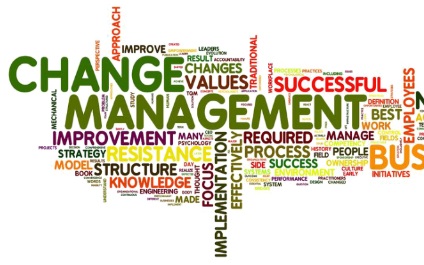Change Categories and Change Definition
Effective management of change provides a structured, consistent, and measurable change environment to be utilized across an organization and is a critical component in the success of its daily business. Its goal is to increase awareness and understanding of proposed changes across the organization and ensure that all changes are made in a thoughtful way that minimize negative impact to services and customers. An organization should have a document that defines the implementation of Change Management procedure. The computing systems, networks, peripherals, and associated facilities are subject to continuous changes driven by new technology, evolving business requirements, changing contractual requirements, and growing regulatory policies. Effective change management applies to both systems and supporting infrastructure, and is a necessary component for the continuous success and growth of the organization.

The Change Management Process
There are keys steps in a change management procedure. But before we start discussion the procedure, we need to ensure a clear boundary of change. Carrtegra has helped many organizations improve their change management process. We discovered that the most confusing part of the process for our clients is “what constitutes a change?” In many cases, the IT staff and management have a vague understanding but not a clear definition, causing constant questioning and debate about certain changes navigating through the change process. For example, should adding a new phone in a new office constitute a change that requires a submittal of change request? The answer is probably not for most organizations because they may exempt such minor routine changes to be outside of the process. But for a highly secured environment, the answer may be “Yes”. Change categories is another important element to categorize and prioritize changes. A normal change does not become an emergency change just because a customer is yelling and demanding a report ASAP. Change definition and categories set a clear boundary so there is no question about what change should or should not following the change process, and what constitute emergency.
Organizations need to define change categories. The most two common change categories are Normal and Emergency changes. There is no strict rule to follow as how to define the change categories; however, the design of the categories should fit a particular organization’s unique needs.
Change Category Definitions
Change categories should be reviewed for total risk value when the following type of changes are identified: Installation, relocation, re-cable or removal of new or existing Data Center located equipment, servers, or major network components.
Change defintion is what constitutes a change. Different organizations will have distinct change defintions. It is a key element of change management, establishing clear boundaries of the process. Below are some areas to be considered when developing change definition.
Examples of Change Definition
- Changes of existing Data Center equipment, servers, or major network components
- Planned environmental changes (i.e. electrical, air conditioning, and etc.)
- Installation of new network wide service, systems software, operating system or program products on productions systems
- Modifications to production operating systems
- Any application software/microcode changes whose implementation procedure may affect system/subsystem availability or networking capability
- Any change with the intent of fixing a major (Severity 1) system problem that is causing an outage
- Any change that may affect the normal availability of services including the production schedule
- Routing hardware and preventative maintenance that may impact service availability
- Catalog maintenance and procedures.
In summary, change definition and change categories are part of the key elements of the change management process. They set the boundary and parameters of changes, and avoid vagueness and confusion. In the next change management discussion, we will look into roles and responsibilities of change management process. Stay tuned!
To get a FREE copy of our suggested quick start "Change Management - Change Definitions" sheet, simply click this button below.

